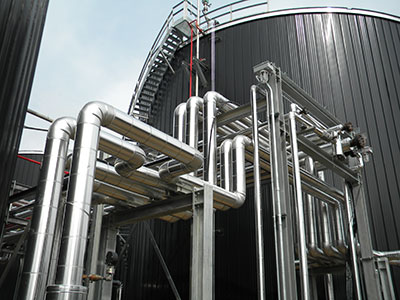When choosing thermal insulation, meeting global standards can feel overwhelming. The right specification points the way to efficiency, safety, and real-world reliability.
Cellular glass insulation is governed by ASTM C552, which sets requirements for density, compressive strength, water resistance, fire rating and thermal conductivity. These standards assure quality for commercial and industrial applications.

Cellular glass insulation is valued for its outstanding durability and safety profile. I have seen how demanding international standards like ASTM C552 shape decisions for both engineers and facility managers. Let me break down what these standards mean, how cellular glass matches them, and why this matters for your projects.
How does ASTM C552 define cellular glass insulation?
It is easy to get lost in specification numbers and technical details. I remember my first project where I had to quickly grasp ASTM standards for a tank retrofit.
ASTM C552 requires cellular glass insulation to meet strict criteria for density and compressive strength. This ensures materials hold up under heavy load and resist crushing, which is essential in industrial tanks and piping.

ASTM C552 covers several critical properties. Density must be within a specified range so the insulation is solid but lightweight. Compressive strength means the product does not deform or collapse under pipes, tanks or building components. Water absorption is nearly zero, making this ideal for humid or wet environments. Fire resistance is rated non-combustible, giving an important safety benefit for chemical and cryogenic tanks. Thermal conductivity numbers are tightly controlled to guarantee energy savings and stable temperature control. These standardized requirements provide clarity to engineers and project managers and set a consistent benchmark for manufacturers. In my experience, delivering cellular glass that consistently meets or exceeds ASTM C552 has helped gain trust with both local and overseas customers.
What makes cellular glass a superior solution for industrial tanks?
Industrial environments demand insulation materials that can handle abuse and last for decades. I have worked with customers who faced recurring corrosion and short-lived insulation systems.
Cellular glass is non-absorbent, non-combustible, and fully inorganic, making it highly resistant to water, chemicals, and fire. This long service life reduces maintenance and replacement costs.

In my daily work, I notice that industrial tank customers need solutions for corrosion under insulation (CUI), especially in chemical plants or fuel storage. Cellular glass addresses CUI risks thanks to its closed-cell structure, which blocks moisture and gas ingress. It does not degrade under exposure to harsh chemicals, nor does it support fungus or microbial growth. Safety standards are rising in many regions, and fire safety is a top requirement. Cellular glass can withstand direct flame and does not emit toxic fumes. Its strong load-bearing capacity lets engineers design large, heavy tanks with confidence, knowing the insulation will not crush or deform over time. Because cellular glass meets ASTM and international standards, procurement teams can trust documentation and performance history. Customized shapes and sizes, including boards and pipes, cut installation time and help fit critical tank or pipe specs. These advantages become very clear in projects that need both safety and a full life cycle solution.
How can manufacturers guarantee ASTM compliance and reliability?
Ensuring every batch meets ASTM C552 is a challenge for insulation suppliers. I have seen how QA teams rely on certification and modern production technology.
Manufacturers use routine laboratory testing and third-party certification, such as ISO and CE marking, to confirm compliance. Precision factory controls reduce variance and maintain high product reliability.
To deliver ASTM-compliant cellular glass, manufacturers like HUAYUE employ strict quality assurance programs. Testing happens at every stage, from raw materials to finished boards and pipes. Density and compressive strength are checked using calibrated equipment, while water absorption and fire safety properties are validated by third-party labs. Certification from international bodies, including CE, ISO 9001 and SGS, backs up performance claims and reassures project managers and procurement teams. Large production capacity with modern production lines helps maintain consistency, even with custom orders for major tanks or building projects. Logistics matter, too, so proximity to seaports and strong distribution networks support global reliability. In my experience, customers ask for documentation and case histories before signing purchase orders. By offering certified products and referencing successful industrial and commercial projects, manufacturers build confidence and long-term partnerships.
What customization options are available for cellular glass insulation?
Every project has unique requirements. For some, off-the-shelf solutions do not fit. This is when working with customizable products adds extra value.
Cellular glass insulation can be custom produced in different sizes, shapes, densities and finishes to match specific tank designs, pipe dimensions and climate conditions.
Many clients request cellular glass in special thicknesses, diameters, or curved forms to fit complex pipework or tank structures. Advanced cutting and molding equipment lets manufacturers deliver boards and pipe sections tailored to project drawings. Surface finishes can be optimized for vapor barriers or extra weatherproofing. Engineers needing specific R-values or compressive strengths for unique loads can work with suppliers to refine the specification. By matching local or project-specific standards in addition to ASTM C552, manufacturers offer tailored solutions for commercial buildings, cold storage, LNG tanks, and chemical processing sites. Detailed customization makes installation faster and reduces wastage, while also ensuring that insulation lives up to the demands of the specific tank or pipeline system. Over the years, I have seen how flexible customization leads to efficient project delivery and better long-term satisfaction for both engineers and plant operators.
Conclusion
ASTM C552 sets the benchmark for cellular glass insulation, guiding safe, efficient solutions for demanding industrial and commercial projects around the world.

